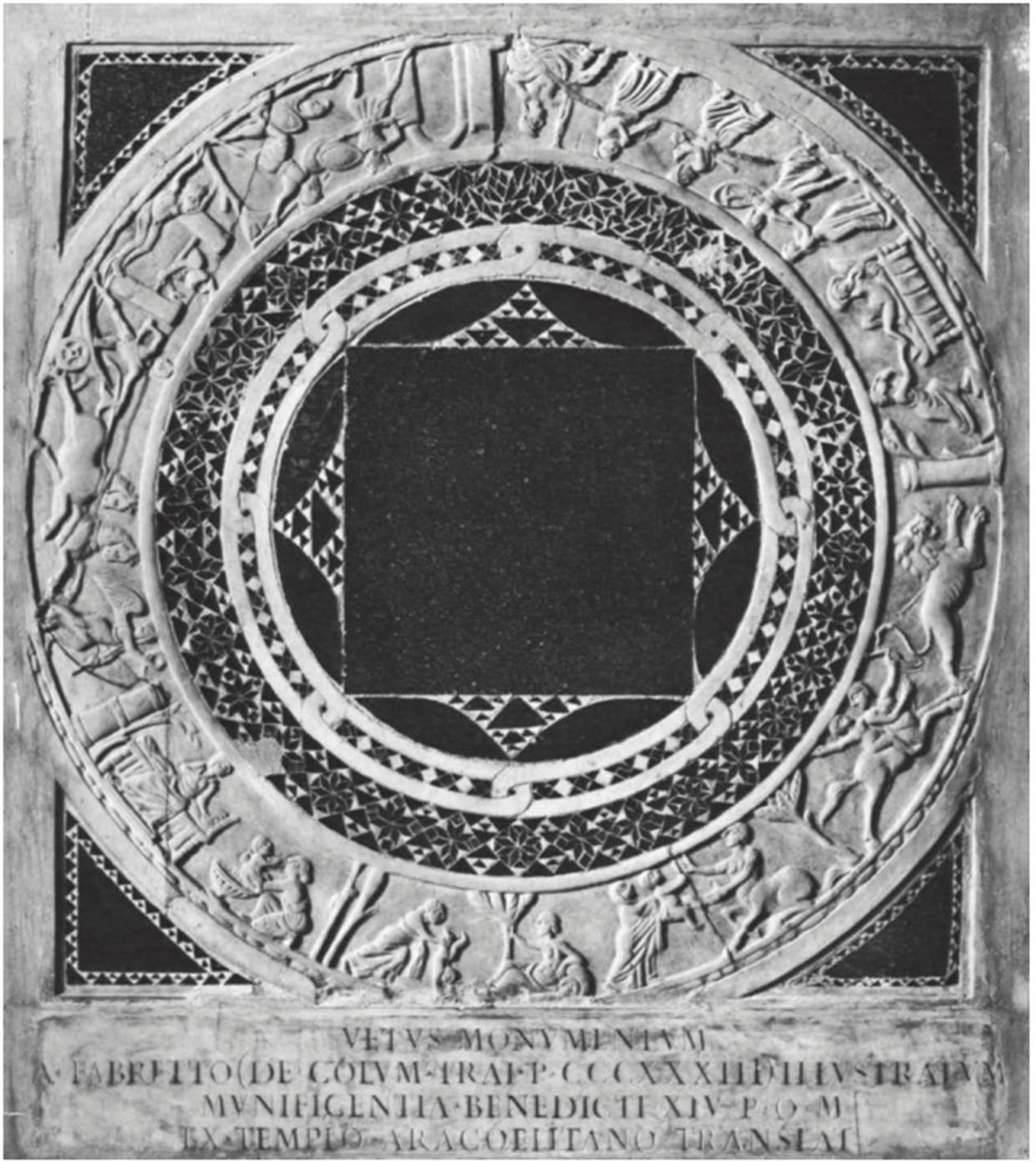Disc with scenes from the life of Achilles. Egypt, 4th century. Marble and mosaic
The low marble plate is enclosed within a square slab, also of marble. The basin of the plate and the corners of the marble slab are decorated with geometric mosaics. The only part of the plate now visible is the low relief band on the rim. The plate is cracked in several places and the first and seventh scenes have been partially restored.
The relief scenes tell the life story of Achilles, very much in the manner of the silver dish (no. 208, where the parallels for the scenes are noted). Counterclockwise from the lower left are scene 1: Thetis sits against her bed; at the right her newborn son Achilles is washed by the nurse in a fluted bowl. Scene 2: Thetis leans forward, dipping the small Achilles into the River Styx; at the right is a river nymph. Scene 3: Thetis hands over Achilles to the wise centaur Cheiron to be educated. Scene 4: Achilles hunts a lion. Scene 5; the story shifts to Skyros. At the right Odysseus grasps a sword with a hilt in the shape of a head; the trumpeter sounds an alarm. Achilles is tricked into revealing his identity; he has picked up the arms, while at the left Deidamia implores him not to leave.

Further to the left are her sisters; at the far right is a male figure leaning against a hydria; a river god is out of place here, and this character may be a misunderstanding of an original seated King Lykomedes. Scene 6: the story shifts now to Troy. Two warriors, evidently understood as Achilles and Hector, fight before the Skaian Gate; the fallen warrior is out of place, and it seems probable that another combat scene has been conflated with the duel of Achilles and Hector (cf. no. 210). Scene 7: Achilles drags the body of Hector behind his chariot; Priam looks down in horror from the city wall; and in front of the chariot is a Victory holding a palm branch and wreath (cf. no. 210).
The narrative is brisk and clear, with the lively gestures typical of manuscript illustration. The figures are simple and robust; eyes are shown frontally and detail is limited. The plate belongs to a large group of Late Antique marble dishes with reliefs (on these dishes, Kitzinger, 1960, pp. 22-28). The formal similarities with silver plates of the type of no. 208 indicate that these have metal prototypes.
The Capitoline dish has been attributed to Egypt, where a good number of similar pieces have been found. In the early thirteenth century it was incorporated into the ambo of the church of Sta. Maria in Aracoeli, in Rome; the fine tesselated work in green, blue, gold, white, and porphyry is owed to the Cosmati. The pulpit was later disassembled, and the slab with the dish was donated to the Capitoline collections by Pope Benedict XIV. Bibliography: Stuart Jones, 1912, pp. 45-47; Snyder, 1923; Guerrini, 1958-1959; Weitzmann, 1959, pp. 55-56.
Date added: 2025-08-31; views: 73;
